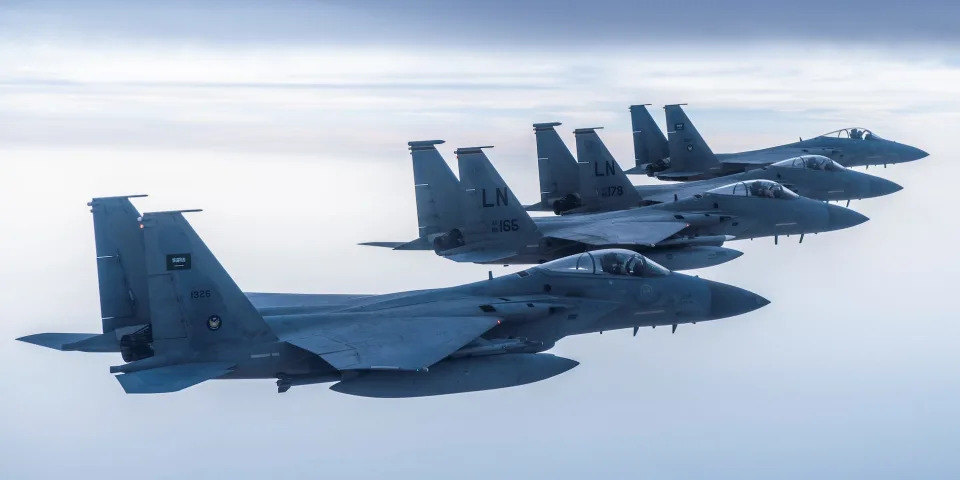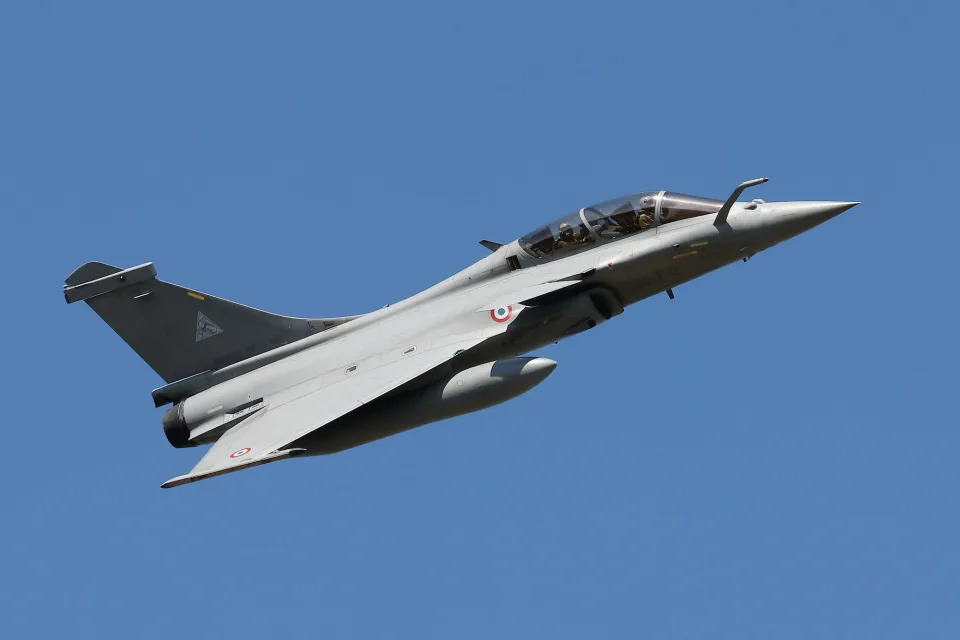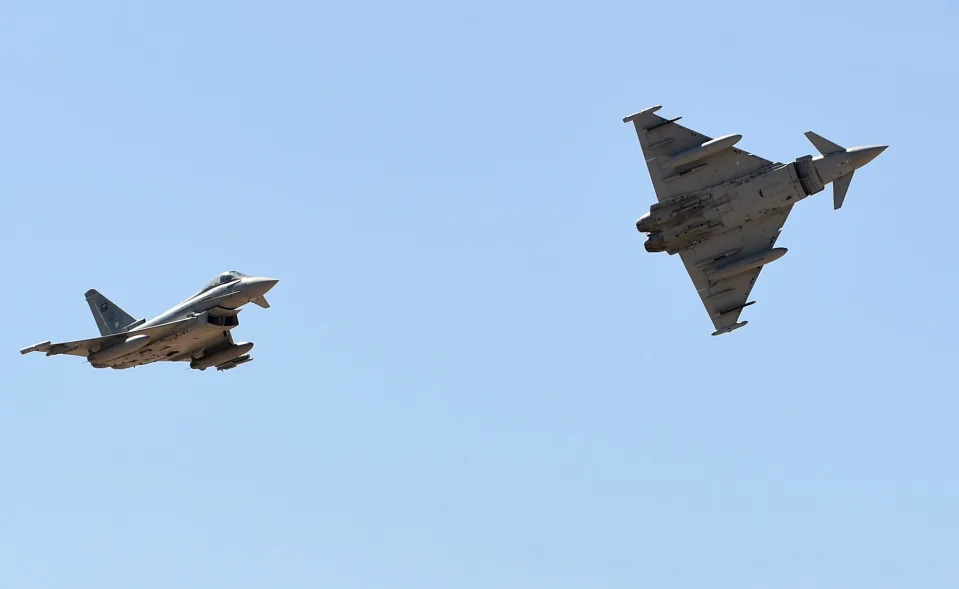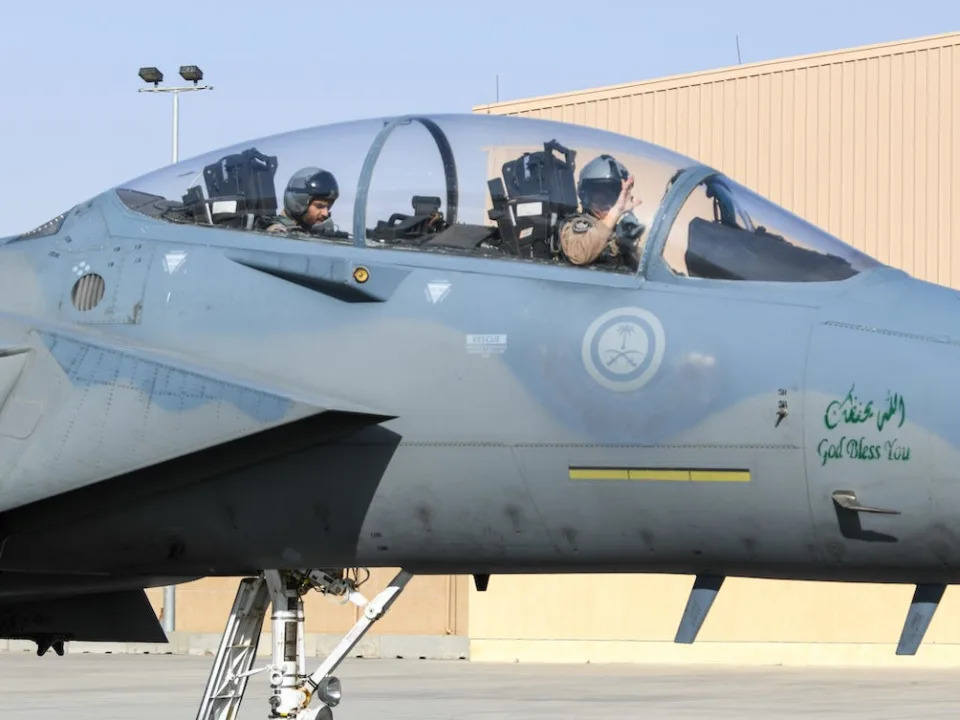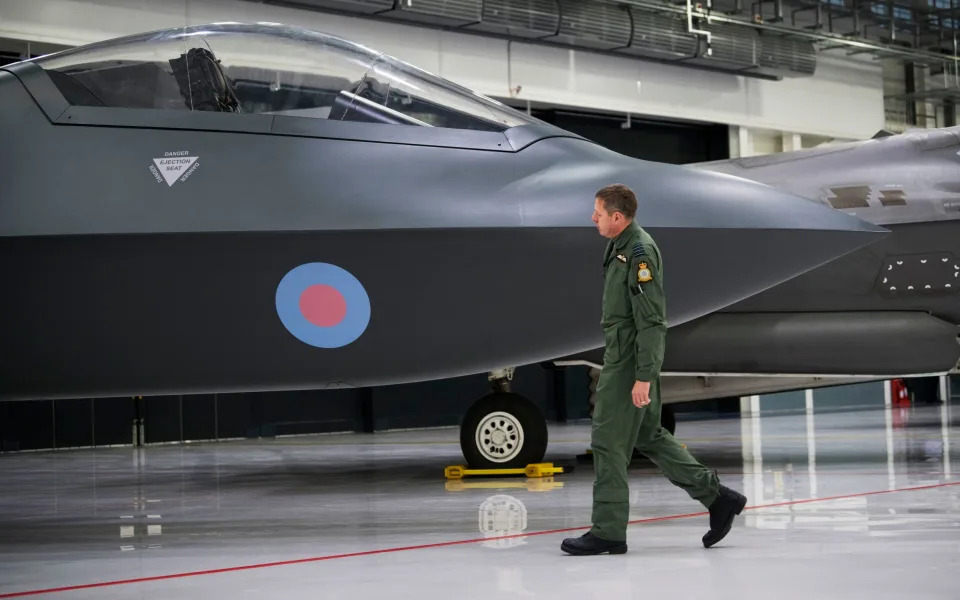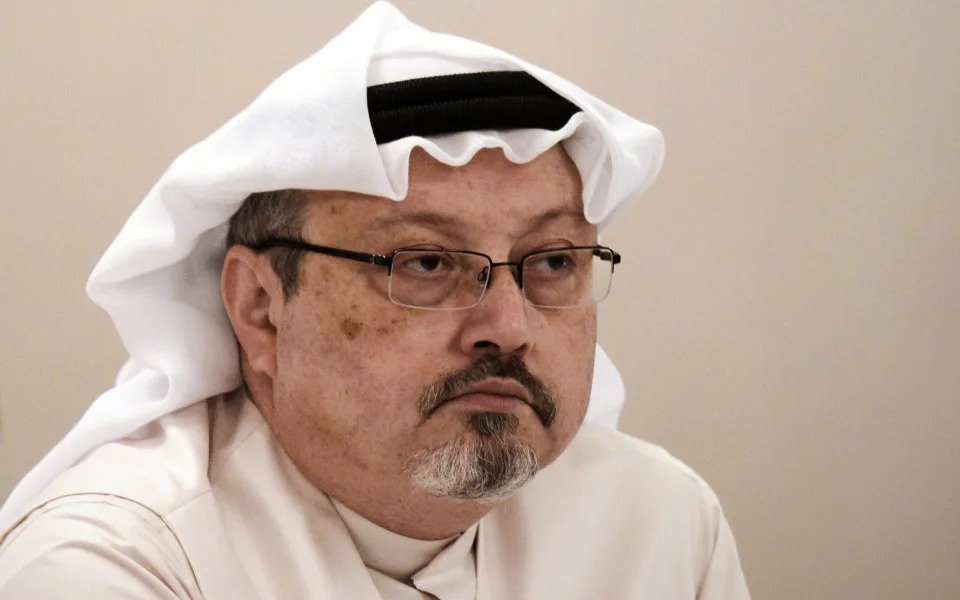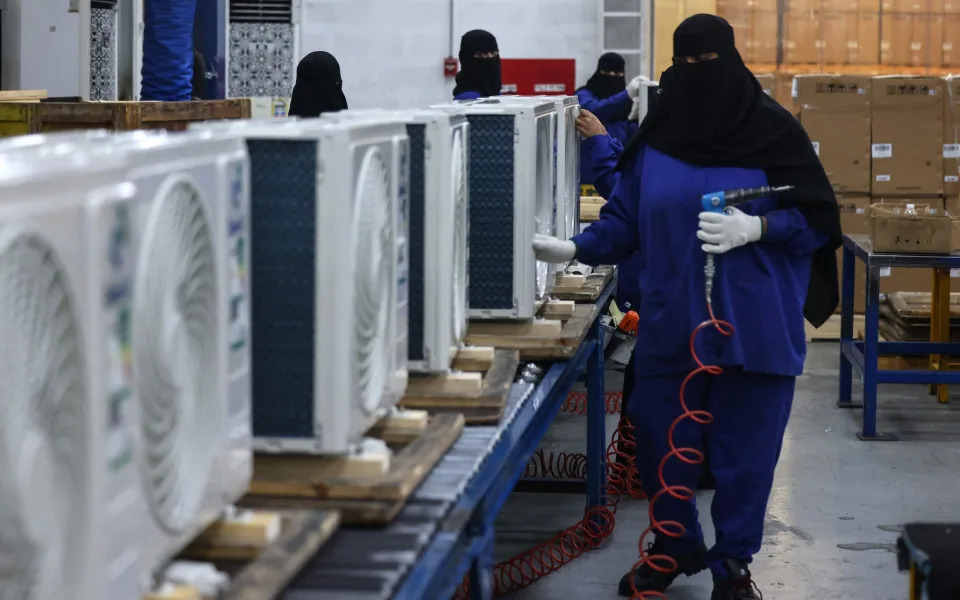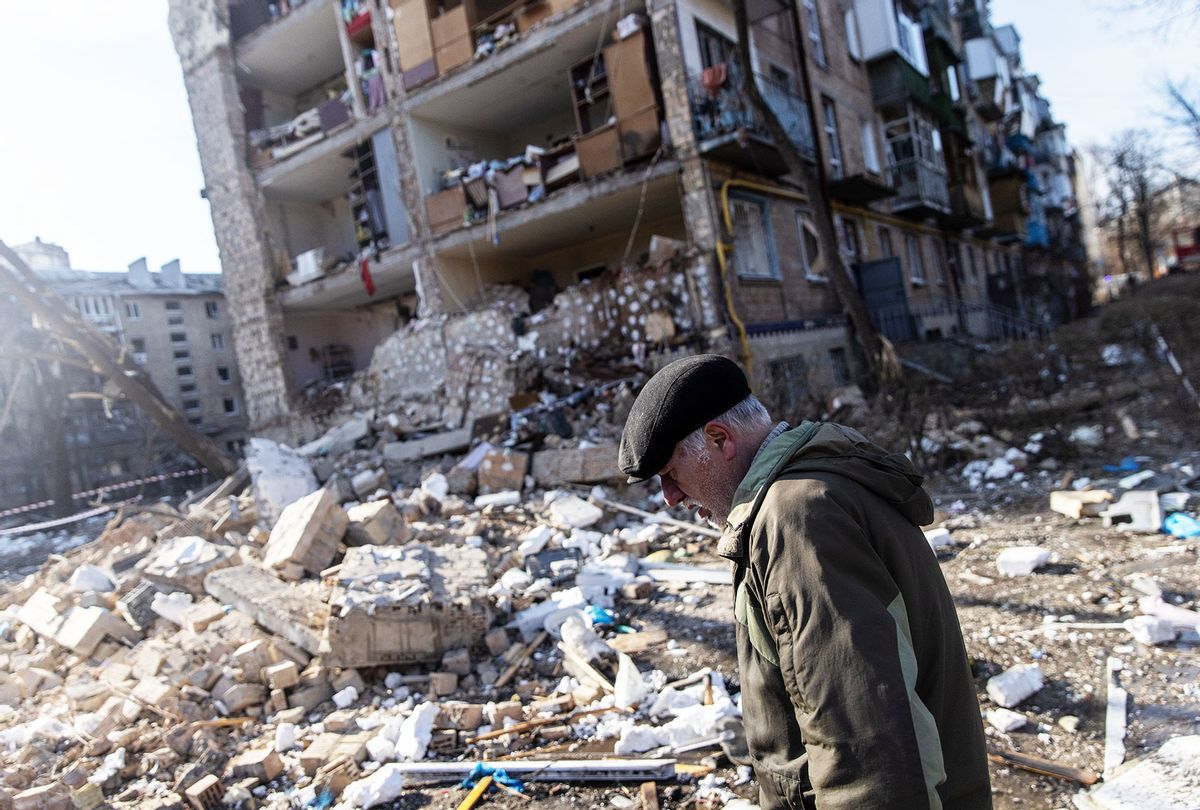Humanitarian organisations warn deadly water-born diseases will spread in the besieged strip if aid is not allowed in.
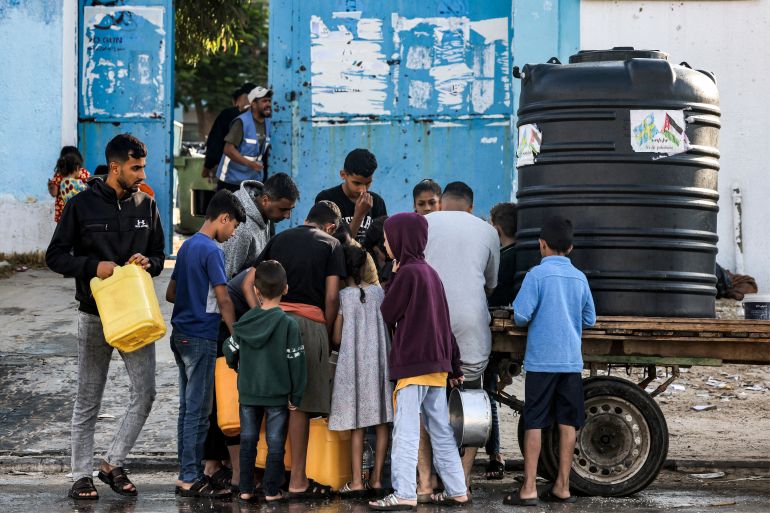
Water sold by private vendors who run small solar-powered desalination facilities has doubled in price in Gaza since October 7
[Mohammed Abed/ AFP]
By Federica Marsi
Published On 21 Oct 2023
Waseem Mushtaha’s four children have been out of school for almost two weeks. Instead of learning mathematics or geography, they are being taught how to ration water.
“Every day I fill a bottle of water for each one and I tell them: Try to manage this,” he told Al Jazeera, speaking from the southern Gaza city of Khan Younis. “At the beginning, they struggled, but now they are coping.”
KEEP READING
By Federica Marsi
Published On 21 Oct 2023
Waseem Mushtaha’s four children have been out of school for almost two weeks. Instead of learning mathematics or geography, they are being taught how to ration water.
“Every day I fill a bottle of water for each one and I tell them: Try to manage this,” he told Al Jazeera, speaking from the southern Gaza city of Khan Younis. “At the beginning, they struggled, but now they are coping.”
KEEP READING
‘Free world, where are you?’ Gaza hospital chief pleads after babies killed
After Israel issued an evacuation order for 1.1 million Palestinians in the northern part of Gaza, Mushtaha drove his wife and children aged eight to 15 to his aunt’s home in Khan Younis, where residents opened their doors to extended family and friends amid Israel’s relentless aerial bombardment.
As a water and sanitation officer for global non-profit Oxfam, Mushtaha sees the markers of an impending public health catastrophe all around him. “People sleep on the streets, in shops, in mosques, in their cars or on the streets,” he said. His family lives alongside around 100 people crammed in a 200-square-metre apartment and count themselves among the lucky ones.
Meanwhile, hygiene products have disappeared from the few supermarkets that are open and water sold by private vendors who run small solar-powered desalination facilities has doubled in price since October 7 – when Israel began bombing Gaza in retaliation for the surprise attack carried out by Hamas. It used to cost 30 shekels ($7.40), but is now priced at 60 shekels ($15).
On Wednesday, Mushtaha estimated that his family would run out of water in 24 hours. After that, he didn’t know what would happen. “We will go to the market and purchase whatever is available,” he explained. “We are looking to the future with bleak eyes.”
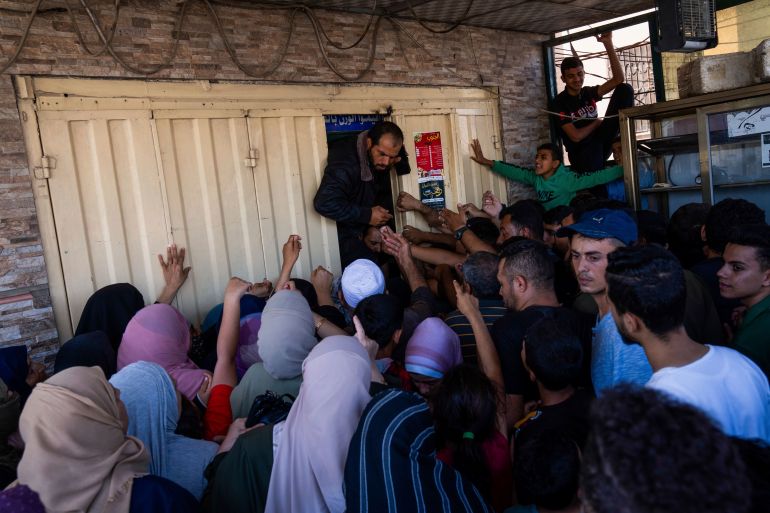
Palestinians try to buy essential goods in Khan Younis in the Gaza Strip [Fatima Shbair/AP]
Collapse of water and sanitation services
Oxfam and United Nations agencies have warned that the collapse of water and sanitation services will spark bouts of cholera and other deadly infectious diseases if urgent humanitarian aid is not delivered.
Israel cut off its water pipeline to Gaza, along with the fuel and electricity provisions that power water and sewage plants, after announcing a total blockade of the Palestinian enclave following the Hamas attack.
Most of Gaza’s 65 sewage pumping stations and all five of its wastewater treatment facilities have been forced to stop operations. According to Oxfam, untreated sewage is now being released into the sea while solid waste is also ending up on some streets alongside bodies waiting to be buried.
Desalination plants have stopped working and municipalities are unable to pump water to residential areas because of the power shortage. Some people in Gaza are relying on salty tap water from the enclave’s only aquifer, which is contaminated with sewage and seawater, or have resorted to drinking seawater. Others are being forced to drink from farm wells
Oxfam and United Nations agencies have warned that the collapse of water and sanitation services will spark bouts of cholera and other deadly infectious diseases if urgent humanitarian aid is not delivered.
Israel cut off its water pipeline to Gaza, along with the fuel and electricity provisions that power water and sewage plants, after announcing a total blockade of the Palestinian enclave following the Hamas attack.
Most of Gaza’s 65 sewage pumping stations and all five of its wastewater treatment facilities have been forced to stop operations. According to Oxfam, untreated sewage is now being released into the sea while solid waste is also ending up on some streets alongside bodies waiting to be buried.
Desalination plants have stopped working and municipalities are unable to pump water to residential areas because of the power shortage. Some people in Gaza are relying on salty tap water from the enclave’s only aquifer, which is contaminated with sewage and seawater, or have resorted to drinking seawater. Others are being forced to drink from farm wells
.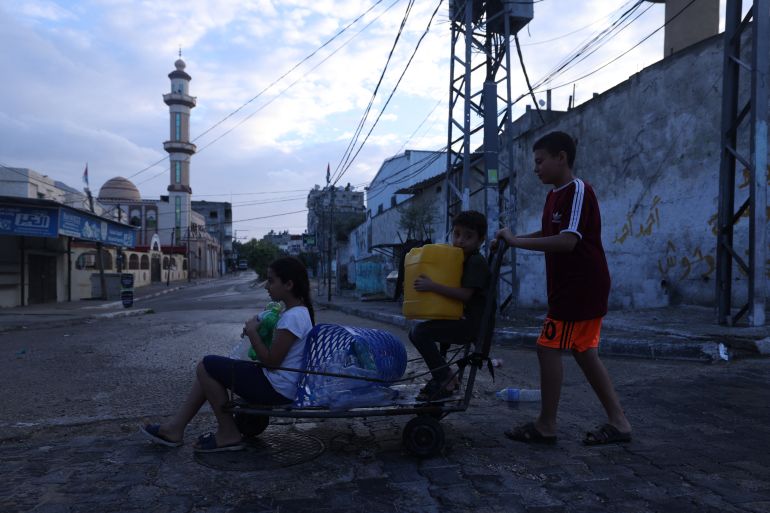

Palestinian children search for a place to refill water in the Rafah refugee camp in the southern Gaza Strip [Mohammed Abed/AFP]
‘On the streets with no protection’
The UN says that currently in Gaza only three litres of water a day is available per person to cover all their needs including drinking, washing, cooking and flushing the toilet. Between 50-100 litres of water each day is the recommended amount for a person to meet their basic health requirements, according to the World Health Organization (WHO).
An employee of the charity Islamic Relief who also found shelter in Khan Younis described a similar situation. “At my parents’ house, there are around 20 children and seven adults sheltering. Even with so many people we only flush the toilet twice a day – once in the morning, once at night – to save water,” she said, requesting anonymity.
“We cook food that uses the least water. We wash for prayers just once or twice,” she added. “We have a neighbour with a well, but he doesn’t have any electricity to pump the water. They’ve got a generator but no fuel.”
For those who have no shelter, conditions are most dire. “There are families with children and newborn babies living without a roof over their heads,” she said. “They just sit on the streets without protection, water, food or anything. They don’t have any security.”
‘We are ready to go’
Fears are growing that dehydration and waterborne diseases will lead to a humanitarian catastrophe amid Israeli air strikes that have killed 4,137 Palestinians.
Humanitarian organisations have repeatedly issued calls for the aid stocked at the Rafah crossing, the sole route for aid to enter the Gaza Strip on the only border that it shares with Egypt, to be let through.
Following a visit to Israel on Wednesday, US President Joe Biden said an agreement had been reached with Israeli Prime Minister Benjamin Netanyahu to allow deliveries of assistance in the coming days. Israel has insisted that all trucks must be checked and that no aid must reach Hamas fighters. Biden also said Egypt had agreed to allow an initial convoy of 20 trucks with aid through the Rafah border crossing into Gaza.
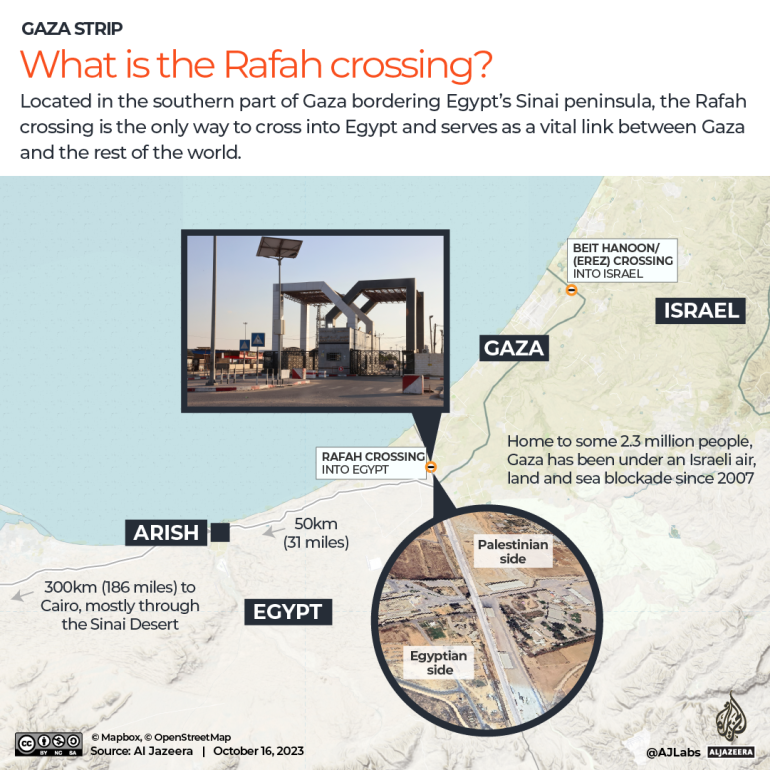
Twice last week rumours of an agreement circulated, suggesting an imminent opening of the crossing that didn’t happen.
Mathew Truscott, Head of Humanitarian Policy at Oxfam, said he felt frustration at the idea that diseases could be spreading while water and medicines piled up a few kilometres across the border.
“Cholera is just one of many waterborne diseases that can be spreading – if we can get aid in, a lot of this can be prevented,” he said. “But you can’t provide humanitarian operations where there are still bombs falling.”
UN chief Antonio Guterres called on Wednesday for an immediate humanitarian ceasefire in Gaza to ease the “epic human suffering”. On the same day, the US vetoed a UN Security Council resolution, supported by most other members, demanding a humanitarian pause in Israel’s bombardment of Gaza.
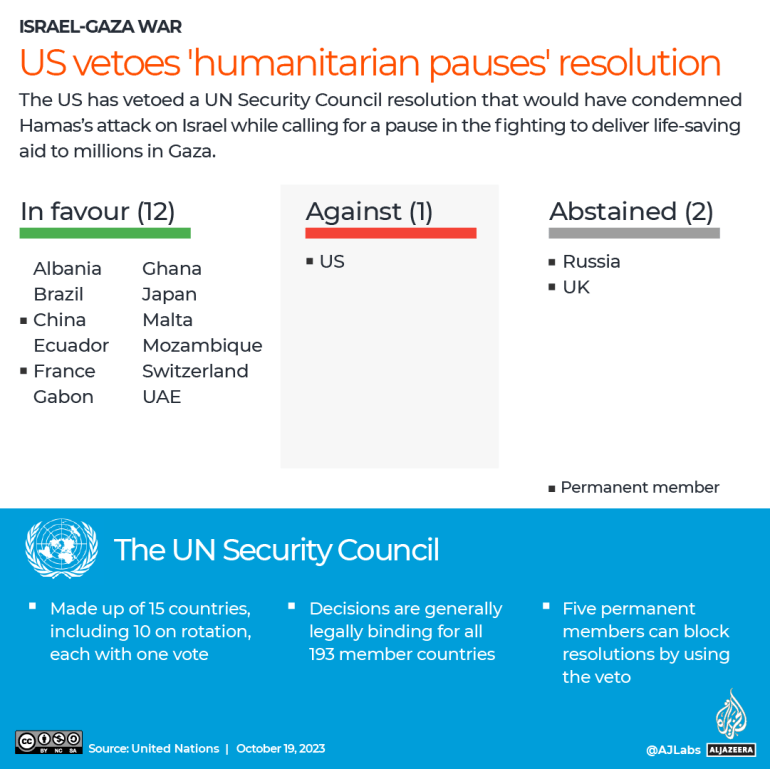
While the war continues, there are fears that there will be more incidents like the al-Ahli Arab Hospital explosion on Tuesday. “We are very concerned for the attacks on healthcare,” Richard Brennan, regional emergency director at the WHO, told Al Jazeera.
Four out of 34 hospitals are no longer operational, according to the UN health agency, as others overflow with injured patients and families in need of shelter. “The conditions are ripe for the spread of a number of diarrhoeal and skin diseases,” Brennan said, with ripple effects to be felt in the region.
In 2022, cholera spread across Syria and Lebanon, killing at least 97 people. While an epidemic has not been registered in Palestinian territories in decades, “it’s conceivable that the bacterium has been brought in and the conditions are now ripe for its spread,” Brennan said.
For any efforts to turn the tide, “getting aid in is vital”, the WHO representative added. “The ball is in the court of the political leaders who have to elevate humanitarian needs as a priority. We are ready to go, but we have to be given unhindered, secure, protected passage to help people in need.”
‘On the streets with no protection’
The UN says that currently in Gaza only three litres of water a day is available per person to cover all their needs including drinking, washing, cooking and flushing the toilet. Between 50-100 litres of water each day is the recommended amount for a person to meet their basic health requirements, according to the World Health Organization (WHO).
An employee of the charity Islamic Relief who also found shelter in Khan Younis described a similar situation. “At my parents’ house, there are around 20 children and seven adults sheltering. Even with so many people we only flush the toilet twice a day – once in the morning, once at night – to save water,” she said, requesting anonymity.
“We cook food that uses the least water. We wash for prayers just once or twice,” she added. “We have a neighbour with a well, but he doesn’t have any electricity to pump the water. They’ve got a generator but no fuel.”
For those who have no shelter, conditions are most dire. “There are families with children and newborn babies living without a roof over their heads,” she said. “They just sit on the streets without protection, water, food or anything. They don’t have any security.”
‘We are ready to go’
Fears are growing that dehydration and waterborne diseases will lead to a humanitarian catastrophe amid Israeli air strikes that have killed 4,137 Palestinians.
Humanitarian organisations have repeatedly issued calls for the aid stocked at the Rafah crossing, the sole route for aid to enter the Gaza Strip on the only border that it shares with Egypt, to be let through.
Following a visit to Israel on Wednesday, US President Joe Biden said an agreement had been reached with Israeli Prime Minister Benjamin Netanyahu to allow deliveries of assistance in the coming days. Israel has insisted that all trucks must be checked and that no aid must reach Hamas fighters. Biden also said Egypt had agreed to allow an initial convoy of 20 trucks with aid through the Rafah border crossing into Gaza.

Twice last week rumours of an agreement circulated, suggesting an imminent opening of the crossing that didn’t happen.
Mathew Truscott, Head of Humanitarian Policy at Oxfam, said he felt frustration at the idea that diseases could be spreading while water and medicines piled up a few kilometres across the border.
“Cholera is just one of many waterborne diseases that can be spreading – if we can get aid in, a lot of this can be prevented,” he said. “But you can’t provide humanitarian operations where there are still bombs falling.”
UN chief Antonio Guterres called on Wednesday for an immediate humanitarian ceasefire in Gaza to ease the “epic human suffering”. On the same day, the US vetoed a UN Security Council resolution, supported by most other members, demanding a humanitarian pause in Israel’s bombardment of Gaza.

While the war continues, there are fears that there will be more incidents like the al-Ahli Arab Hospital explosion on Tuesday. “We are very concerned for the attacks on healthcare,” Richard Brennan, regional emergency director at the WHO, told Al Jazeera.
Four out of 34 hospitals are no longer operational, according to the UN health agency, as others overflow with injured patients and families in need of shelter. “The conditions are ripe for the spread of a number of diarrhoeal and skin diseases,” Brennan said, with ripple effects to be felt in the region.
In 2022, cholera spread across Syria and Lebanon, killing at least 97 people. While an epidemic has not been registered in Palestinian territories in decades, “it’s conceivable that the bacterium has been brought in and the conditions are now ripe for its spread,” Brennan said.
For any efforts to turn the tide, “getting aid in is vital”, the WHO representative added. “The ball is in the court of the political leaders who have to elevate humanitarian needs as a priority. We are ready to go, but we have to be given unhindered, secure, protected passage to help people in need.”
SOURCE: AL JAZEERA

